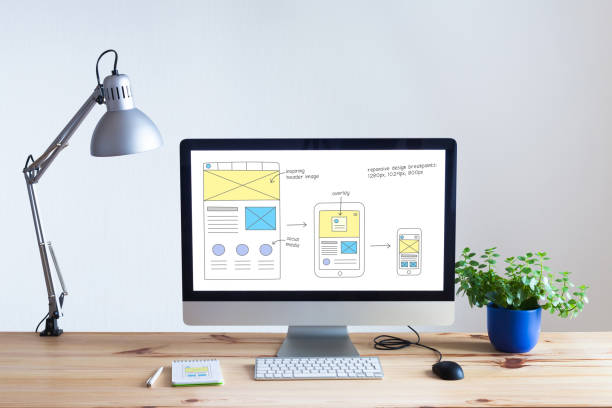Garden Flags: Transforming Decor into Expression and Identity
Garden flags have transitioned from mere decorative accents to powerful mediums of expression and communication in outdoor spaces. While they still add personality to your home, they now serve a broader purpose, conveying messages and values to your visitors. In today’s landscape, garden flags are essential elements of outdoor decor, offering both aesthetic appeal and meaningful representation of individuality and sentiment.
With a myriad of designs, themes, and customization options available, garden flags provide a versatile means of personal expression. Whether celebrating special occasions, honoring loved ones, or advocating for causes, these flags offer a unique platform for homeowners to showcase their identity and values. As such, they have become integral components of outdoor settings, reflecting not only the beauty of nature but also the diverse tapestry of human expression.
1. Make a Statement
Garden flags are an easy way to express your personality and create a welcoming vibe for visitors. They come in many sizes, colors, styles, and designs to fit any aesthetic. You can even find flags that celebrate your favorite pet or bear spiritual messages of hope and faith that uplift passersby and guests. These outdoor decorative flags can give your home a distinct and individualized look that sets it apart from other properties in your neighborhood.
They can also showcase your love for nature, the beach, or a particular hobby. For instance, you can find garden flags featuring depictions of popular bird species. There are also garden flags that feature images of lakes and coastal scenery to show off your passion for the shore. You can also use garden flags to mark a memorial garden or a tribute for a lost loved one. These flags are a thoughtful way to honor them and help comfort friends who may feel at a loss for what to say.
Typically, garden flags are printed with beautiful artistic images that appear on both sides of the fabric. They can withstand harsh outdoor conditions like sunlight, wind, and rain without losing their beauty. Many are made of high-quality nylon or polyester fabrics that resist mildew and are fade-resistant. You can also find these flags in different materials, such as burlap or linen.
2. Be Visible
Flags are easy to see and can help passersby find your garage sale. They can also be used to mark a route around your yard or garden, allowing visitors to navigate easily and efficiently.
Custom garden flags make your home stand out and add a personalized touch to your outdoor decor. They can feature your initials or a festive design for holidays and special occasions, such as a Christmas tree, shamrocks for St. Patrick’s Day, or a memorial design that says “loved one always with us.”
Because they’re small and easy to move, garden flags can be displayed on various surfaces such as fences, porches, and decks. They can also be placed on stakes or hung from a decorative pole.
Choose a durable flag that won’t fade in the sun. Nylon and polyester are both good choices. Cotton flags can be a bit sturdier, but they’ll wear down faster than synthetic fibers.
Look for garden flags with a pole sleeve across the top that accepts a flag pole and hardware. It’s important to keep your flag securely in place, especially if it’s in a windy location. A rubber stopper is a great preventative to consider, or you can invest in a specially designed flag pole that locks at the end of the pole. This feature helps keep your garden flag from blowing away, allowing you to enjoy its beauty without worry.
3. Make a Statement with Custom Flags
The versatility and decorative potential of custom flags make them an attractive branding tool for a number of uses. Whether you choose a festive design that celebrates a holiday or a simple message of welcome, these small outdoor decorations will capture the attention of anyone who passes by.
Aside from their decorative appeal, garden flags are easy to hang and will hold up well in most weather conditions. They’re also a cost-effective way to elevate your marketing presence with a one-of-a-kind look.
Unlike larger banners that display national or municipal logos or symbolize alma maters, garden flags are designed to be decorative and personal. They can be customized with your family name, a special phrase, or a beloved pet’s image to create an eye-catching design.
They can also be printed on both sides to ensure visibility from a distance or in any direction. Depending on the complexity of your artwork and desired color saturation, there are a number of printing options available to choose from. FFN utilizes both heat transfer and direct-to-garment (DTG) printing, depending on the project requirements. When selecting a custom flag printing method, consider the type of fabric your flag will be made from and the intended use to make sure your finished product meets your needs. Once your order is processed, the embroidered designs will be stitched onto the fabric and sewn together before finishing details such as eyelets or pole pockets are added.
4. Make a Statement with a Custom Logo
Whether you’re welcoming guests into your home, celebrating a holiday, or commemorating loved ones lost, custom flags are a powerful way to convey your unique style and message. With an eye-catching logo or other brand elements, these promotional tools create a lasting impression that stands out from the competition. You can see these types of flags everywhere, including car flags outside car dealerships, grocery stores, art galleries, universities, and even custom house flags at new housing developments hosting open houses or grand openings.
You can also add visual appeal to your yard with decorative garden flags. These smaller flags feature an artistic image appearing on both sides and are typically made of durable materials that resist mildew. They can be hung on a door hanger or mounted on a pole for use in your flower bed. You can find a variety of designs and themes, including seasonal or holiday-themed flags, flags that honor your favorite pet or your alma mater, and flags featuring spiritual messages of hope.
You can also use garden flags to support a specific cause. Whether you’re supporting local organizations, environmental initiatives, or political causes, these flags are an effective way to spread the word and inspire others to join your movement. Be sure to balance the quantity of flags with their quality to ensure your message is visible from a distance and leaves a lasting impression on your audience.
Today, custom garden flags serve not only to add personality to homes but also to convey messages and values to visitors, making them essential elements of outdoor decor. With a wide range of designs, customization options, and durable materials available, garden flags offer a versatile means of personal expression and representation. Whether celebrating special occasions, honoring loved ones, advocating for causes, or promoting brands, these flags serve as impactful tools for showcasing individuality and sentiment. As such, they contribute to the diverse tapestry of human expression while enhancing the beauty of outdoor settings. Whether making a statement, enhancing visibility, showcasing custom designs, or promoting brands, garden flags offer a unique and effective way to communicate messages and create lasting impressions in outdoor environments.


















 A leading Australian Solar Pool Heating Company, founded over 20 years ago with a dedication to systems that provide savings for clients and that are beneficial to the environment. The firm specialise in solar pool heating solutions in Sydney for homes and commercial customers.
A leading Australian Solar Pool Heating Company, founded over 20 years ago with a dedication to systems that provide savings for clients and that are beneficial to the environment. The firm specialise in solar pool heating solutions in Sydney for homes and commercial customers.




